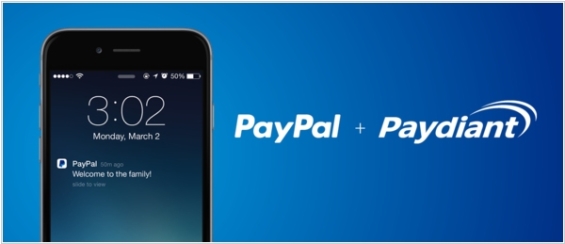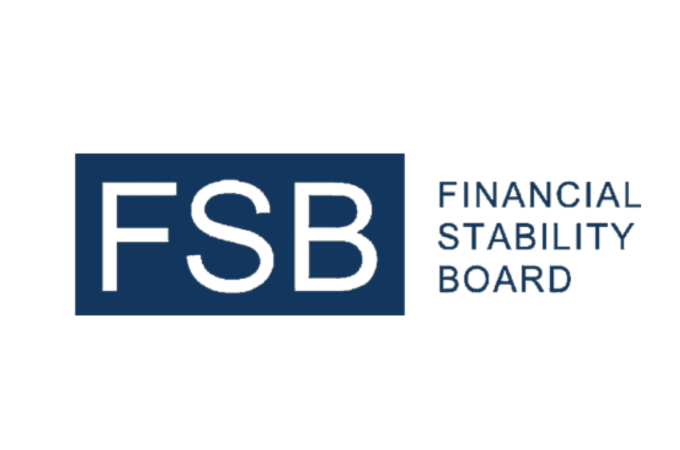
Battle For Mobile Payments: Guide to Digital Wallets
THE FINANCIAL BRAND: According to BI Intelligence, the consumer payments industry will process about $2.7 trillion of card-based payments in the US in 2015. This explains why there is a massive amount of mobile-centric innovation occurring in the payments space and why competition for the consumer’s wallet is so intense.
If you are involved in payments industry, you know that the last five years has seen some amazing new technologies finding their way to into mainstream payments landscape. The interest in payments is so palpable that many new startups have emerged to disrupt the status quo. It is not just the new startups that are disrupting the landscape, but even large existing Silicon Valley giants have launched their first foray into payments (Apple) or have rebooted their existing initiatives (Google).
Because of the recent changes in the payments competitive landscape, I thought it would be helpful to evaluate the primary mobile wallet players and new card-based payment devices from a technology adoption perspective to determine how banks and credit unions may be able to benefit from this new wave of innovation.
The solutions to be covered in my two part analysis include:
- Apple Pay / Passbook (NFC)
- Android Pay / Google Wallet (NFC/HCE)
- Samsung Pay (with LoopPay MST)
- MCX/CurrentC/Paydiant Wallet
- PayPal Wallet
- Coin Card
- Plastc Card
- Swyp Card
- Stratos Card
Each of the above technologies has strengths and weaknesses. The first five are mobile wallet solutions that enable paying through the phone at the POS as the primary modality of payment. The final four use a standalone plastic device along with mobile phone as a supporting accessory to conduct payment at the POS.
I will be covering the mobile wallets today, with my subsequent article on the card-based solutions being published tomorrow on The Financial Brand.
Apple Pay
Apple Pay was introduced with grand fanfare in late 2014 and appears to have grown in acceptance by merchants and users ever since. At Apple’s Watch event, Tim Cook has announced that Apple Pay is now accepted at over 700,000 locations. That includes 50,000 Coca-Cola machines, where as many as 100,000 units will take the wireless payments by the end of the year. This compares to just 220,000 points of sale at introduction, reflecting both the acceptance of Apple Pay and the quickening conversion to NFC terminals by merchants. This acceptance should only increase with the addition of Apple Watch users.
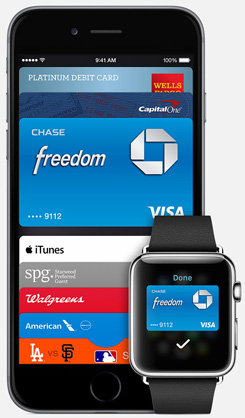 Strengths:
Strengths:
- Apple Pay offers the best user experience for making mobile payments currently in the marketplace.
- Pioneered the concept of tokenization for mobile payments with the help of Visa and MasterCard. This authentications has the potential to effectively eliminate traditional card fraud associated with magstripe based credit cards.
- Successfully integrated biometrics using the proprietary TouchID sensor to provide a new easy way to pay. When the customer presents the phone near the NFC enabled contactless payment terminal, the wallet loads automatically without having to launch an app thereby providing a smooth user experience.
- Payment credentials are stored in the cloud, while the token is stored in a secure element (does not need an internet connection to use Apple Pay).
- Card enrollment and provisioning is automatic via iTunes or by taking a photo of the card (Green Path).
- Can be used in NFC enabled POS as well as in-app.
- Apple managed to bring most of the payment networks and banks/credit unions to execute a near textbook perfect launch. More financial institutions are signing up to attract the affluent Apple customers as part of their customer base and to compete for the ‘top of wallet’ spot in their customers mobile wallet.
Weaknesses:
- Merchant Adoption – a fair number of businesses still do not have support for NFC contactless terminals limiting the use of Apple Pay.
- No rewards program is another limitation with Apple Pay. (the card used to pay may have rewards)
- Apple Pay is proprietary to the iOS ecosystem, effectively ruling out the Android user base which has a significant number of users in the US and worldwide.
Opportunities:
- As more of the newer iPhones get sold, Apple Pay will gain traction and people will try Apple Pay … increasing adoption.
- The launch of Apple Watch opens up Apple Pay to older iPhones (5S, 5C), which may add additional users who have not upgraded to the newer iPhones.
- As we see more merchants adopting NFC enabled terminals to support EMV liability shift in 2015, the number of locations accepting Apple Pay will grow.
Threats:
- Apple Pay has been in news lately due to some of the reported low-tech fraud activity. Even though none of this has anything to do with the security measures Apple put in place in designing Apple Pay, the weakest link in the whole scheme is the Yellow Path for provisioning cards for users. Financial institutions launched Apple Pay without much time to account for newer security threats.
Analysis:
- Apple Pay is a surprisingly solid offering for ‘version 1′ and can only get better. Customers who use Apple Pay show strong affinity for paying with Apple Pay as more locations start to accept it.
Android Pay/Google Wallet with NFC
Google Wallet was the mobile wallet pioneer in the US in using NFC technology. However due to lack of partnerships and the telecom providers unwillingness to install the wallet as part of the new phones being sold, it did not see early mainstream adoption.
After the launch of Apple Pay, Google did a major reboot to their wallet initiative and was able to broker a partnership with Softcard (who is now defunct) to acquire some of its IP, and is planning to re-launch the wallet and the Payments API platform.
Strengths:
- Google is planning to launch its new platform for payments (loosely named as Android Pay) as a payment API rather than a proprietary offering. This allows Google to open up the API to device manufacturers and developers to build wallets that may result in mainstream adoption.
- Android has a very healthy user base in the US and the rest of the world. Its user base also tends to be younger and more of a digital native.
- By separating the Android Pay mobile payments API and the Google wallet the proprietary offering, Google is opening up the playing field for more innovation. This may allow financial institutions to finally integrate payments into their mobile banking offerings, which has always been a longstanding pipe dream.
- Google has not openly revealed its intentions of how it would use host card emulation (HCE) in this mobile payments/wallet strategy. There is a very good chance we may see HCE being integrated into the Android Pay API to support phones which do not have an NFC radio/Secure Element built in. The Android OS provides built-in support for HCE since its Kit Kat release
Weaknesses:
- Apple Pay already has launched and gaining momentum, while Android Pay has not been officially released. This late entry into the market may impact market share.
- Design by committee hardly produces mind blowing user experiences. We will have to wait to see how Android Pay will be integrated into a variety of mobile payment offerings and how the user experience will stack up against Apple Pay.
- The success of the revenue share scheme Google has promised the Telcos to pre-install Google Wallet in newer handsets needs to be proven after product launch.
Opportunities:
- Android has an 80% worldwide market share. With an open API approach, Google is betting on sheer volume of its user base to make this payments solution a success.
- After the API launch, financial institutions may be able to integrate this into their mobile banking offerings, providing a more seamless payment experience and increasing loyalty when combined with their rewards programs.
Threats:
- Even though Google Wallet was launched first, it does not have the first mover’s advantage compared to Apple Pay in terms of adoption because early launches were ‘false starts’ from a broad user acceptance perspective.
- The ARPU (Avg. Revenue. Per User) for Android is one quarter of iOS users according to a Benedict Evans analysis. This poses the question of how many Android users may actively use the mobile payments/wallet.
- In developing nations (like India and Africa), the notion of direct carrier billing is very frequently used in payments. It would be interesting to see how the new Android Pay API may work with that model.
- With Android’s open model and fragmented ecosystem, the success of Android Pay may not be imminent.
Analysis: Android Pay maybe late to the party, but it may provide a challenging alternative for Apple Pay after its launch. The open API model may allow integrating payments into variety of devices, real world use cases, and applications like mobile banking. The success of this is something we will have to wait and see.
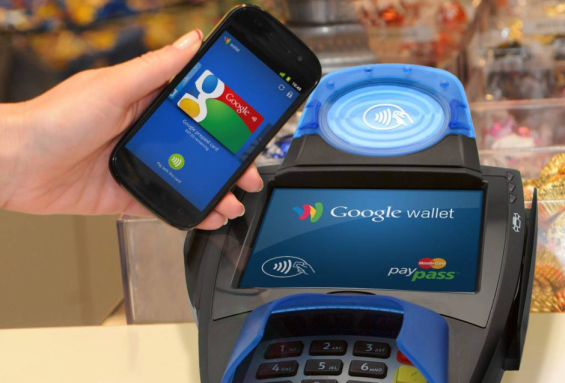
Samsung Pay (with LoopPay MST)
Samsung acquired the mobile payment startup LoopPay barely a week before Google’s announcement of Softcard deal. This has put Samsung in an interesting position where it is one of the first device manufacturers to provide a wallet offering directly competing with Apple Pay. The plans of how Samsung will support Android Pay without stressing the relationship with Google is unknown at this point in time.
Strengths:
- Samsung Pay is directly aimed at Apple Pay in most of the capabilities being offered. It supports tokenization and biometrics and has relationships with the major card networks and banks as launch partners.
- Samsung Pay boasts a much broader adoption rate (close to 90% of POS) for the terminals in US due to its inclusion of LoopPay’s Magnetic Secure Transmission (MST) technology, allowing it to be used in traditional non-NFC, magstripe only POS readers.
Weaknesses:
- Samsung Pay launches in the summer of 2015. This delay provides a significant lead for Apple Pay, which launched in October 2014.
- Samsung Pay stores credentials in the cloud, however, the token is transmitted from the cloud to the device at the time of purchase. This requires cellular or data connection which prohibits usage in areas which have weak cellular signals or no data connection. However Samsung Pay may fallback to LoopPay’s MST to complete the payment.
- Unlike Apple Pay, the customer must launch the app to use Samsung Pay to make a payment near the terminal.
- Samsung Pay only supports POS purchases, (both NFC and existing magstripe). There are no in-app purchases.
Opportunities:
- Samsung may decide to make the LoopPay technology a hardware chip, which could be resold to device manufacturers, making MST available to most of the Android family of phones.
- There is discussion that Samsung may waive all fees associated with its new mobile payment service. It won’t charge the usual 0.0015% fee on each transaction
- Samsung Pay launches in US and Korea at the same time. It would be interesting to observe the success of this in an international market.
- Samsung Pay also supports Private Label Credit Cards (Apple Pay does not).
- The slower growth of NFC terminals in US may result in a timing advantage for Samsung Pay with Loop MST technology. Most other mobile wallets rely on NFC capabilities.
Threats:
- With Google announcement of Android Pay API, it is unclear how Samsung would promote their offering and differentiate it when they will also have to install Google Wallet in their phones.
- With the EMV Liability shift, most of the merchants who decide to upgrade may move to an NFC card reader to future-proof their investments. This puts into serious question how long Samsung will be able to maintain the benefit and advantage offered by the LoopPay acquisition.
Analysis: Samsung Pay may be the first direct competitor to Apple Pay to launch in the US with a similar feature set. Samsung has built the S6 and S6 Edge devices to be a premium offering, and wants to go head on with Apple iPhone 6 and iPhone 6 plus.
While many industry analysts question Samsung’s strategy to drop some of the features loved by Android users (waterproof, replaceable batteries), the S6 line of phones may provide a very strong alternative to the iPhone 6 and 6 plus.
Apple stole the news for the record number of phone sold in Q4 2014 (approx. 74 million), with Samsung losing the top spot but still managing to sell a relatively close 73 million phones worldwide (TechCrunch). With a 24.7% world smartphone sales market share (compared to Apple’s 15.4%), Samsung still has a comfortable lead/user base. If this user base upgrades to the S6 device from the prior iterations, gives Samsung Pay a try, and likes what they see, Samsung Pay will manage to keep a spot in the mobile wallet payments race.
MCX/CurrentC/Paydiant Wallet
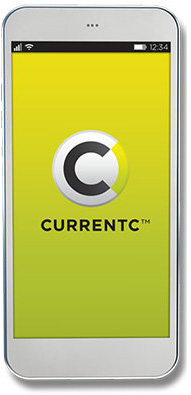 It is hard to analyze a mobile payments wallet, which only a few have used in Beta. MCX is the merchant conglomeration that is building their own mobile wallet to bypass the interchange fees paid by merchants to the payments network. MCX is basing its mobile wallet using Paydiant’s QR code / cloud wallet technology to their in store payments. The PayPal acquisition of Paydiant came as a surprise to many and saw the industry consolidating under a few well-funded players
It is hard to analyze a mobile payments wallet, which only a few have used in Beta. MCX is the merchant conglomeration that is building their own mobile wallet to bypass the interchange fees paid by merchants to the payments network. MCX is basing its mobile wallet using Paydiant’s QR code / cloud wallet technology to their in store payments. The PayPal acquisition of Paydiant came as a surprise to many and saw the industry consolidating under a few well-funded players
Strengths:
- MCX is backed by a powerful conglomeration of merchants.
- Will provide coupons and offers through the wallet.
- Earning of rewards from participating merchant rewards programs.
- Allows paying from bank accounts, gift cards and select merchant branded private label credit cards.
- Keeps customer transaction (SKU level) data internal to merchants.
Weaknesses:
- Uses QR-code technology, which doesn’t provide a fluid POS experience as Apple Pay and other mobile wallets.
- Does not accept major credit cards backed by payment networks like Visa/MasterCard/Amex/Discover (Future plans to support these are unclear)
- One of the primary funding sources is a customer’s bank checking account, which the customers may be unwilling to share due to security reasons.
- MCX CurrentC initiative was announced two years ago, but still hasn’t been rolled out to general public.
- MCX merchants with NFC terminal support who do not allow Apple Pay have received bad press with consumers.
Opportunities:
- MCX promises to pass along significant savings to customers by eliminating the swipe fees paid to card networks. As an example, MCX says customers may see savings in the order of 10 to 20 cents per gallon of gas by using CurrentC wallet in a gas station. This may be a powerful behavioral change, which customers may support in the long run when they see savings in action.
- Integration to loyalty/rewards programs offered by store an also be a reason for consumers to try out the CurrentC wallet.
Threats:
- A late launch into the market may see CurrentC face the same fate as Softcard, which never attained much traction irrespective of a huge marketing spend.
- Too many choices for mobile payments at the POS may confuse the customers who may chose to take the easy payment route. Instead of a ‘top of the wallet’ card problem, CurrentC may face a ‘most seamless way to pay’ challenge.
Analysis: The QR-code method of payments is still being successfully used in Starbucks for their mobile payments. From a consumer point of view, it remains to be seen if people will be motivated/willing to link their bank accounts to save interchange fees for a merchant in trade for nominal rewards/offers and coupons.
PayPal Wallet
PayPal does not provide a mobile wallet in the traditional sense. The PayPal app allows you to tap into a list of merchants who accept PayPal in a geographic area. By checking into the merchant when you are in the location (either using the app, or by automatically sensing a PayPal beacon at the store), PayPal allows to make a payment using your PayPal funding sources. By using your picture taken at the time of application enrollment, PayPal provides secure payments at POS.
Strengths:
- The user experience makes it quite easy to pay with the PayPal app. Check in can be made manually, or automatically if the PayPal app senses a BLE enabled PayPal Beacon at the merchant store.
- PayPal has a rich portfolio of ‘cards on file’ for moving funds in and out. PayPal mostly uses the bank ACH funding to minimize the swipe fees paid to card networks.
- Low incidence and effective fraud fighting methods are one of the core strengths of PayPal. It also has already tokenized millions of deposit bank accounts.
- By acquiring Paydiant, PayPal now also can support QR code-based payments at a POS terminal. This provides lots of synergies with the MCX merchants.
Weaknesses:
- User adoption for PayPal wallet has been relatively low. While we do not have actual number of users and usage, we are yet to see users actively using PayPal wallet to make mobile POS payments. (A similar initiative by Square was discontinued due to lack of mainstream adoption).
- PayPal’s mobile wallet strategy at this moment remains unclear with the Paydiant acquisition. Will PayPal Wallet compete with CurrentC or manage as a standalone offering?
Opportunities
- The Paydiant acquisition may help PayPal to crack the POS payment issue. Even though PayPal made a neat integration at the Home Depot stores, where you could pay with PayPal phone number and a pin at the POS, this never really took off due to lack of employee education.
- PayPal could use the Venmo acquisition to convince the younger crowd into a rebooted mobile wallet offering.
Threat:
- The biggest threat are the other mobile payments/wallet offerings that have a head start.
- While strong in the online payment arena, PayPal suffers an identify crisis on the mobile payment/wallet world.
Analysis: PayPal has made some significant acquisitions in the payment space with Braintree/Venmo and Paydiant. PayPal also has an impressive existing user base with numerous cards and bank accounts on file for each customer. They also have been fighting payments fraud for more than a decade, which puts them in a unique position when it comes to fraud fighting capabilities.
It is up to PayPal’s new incoming CEO Dan Shulman to combine all these strengths to make a strategic unified mobile payments/wallet offering so that PayPal can get a spot on the mobile payments race and not suffer the same fate as Square Wallet.
